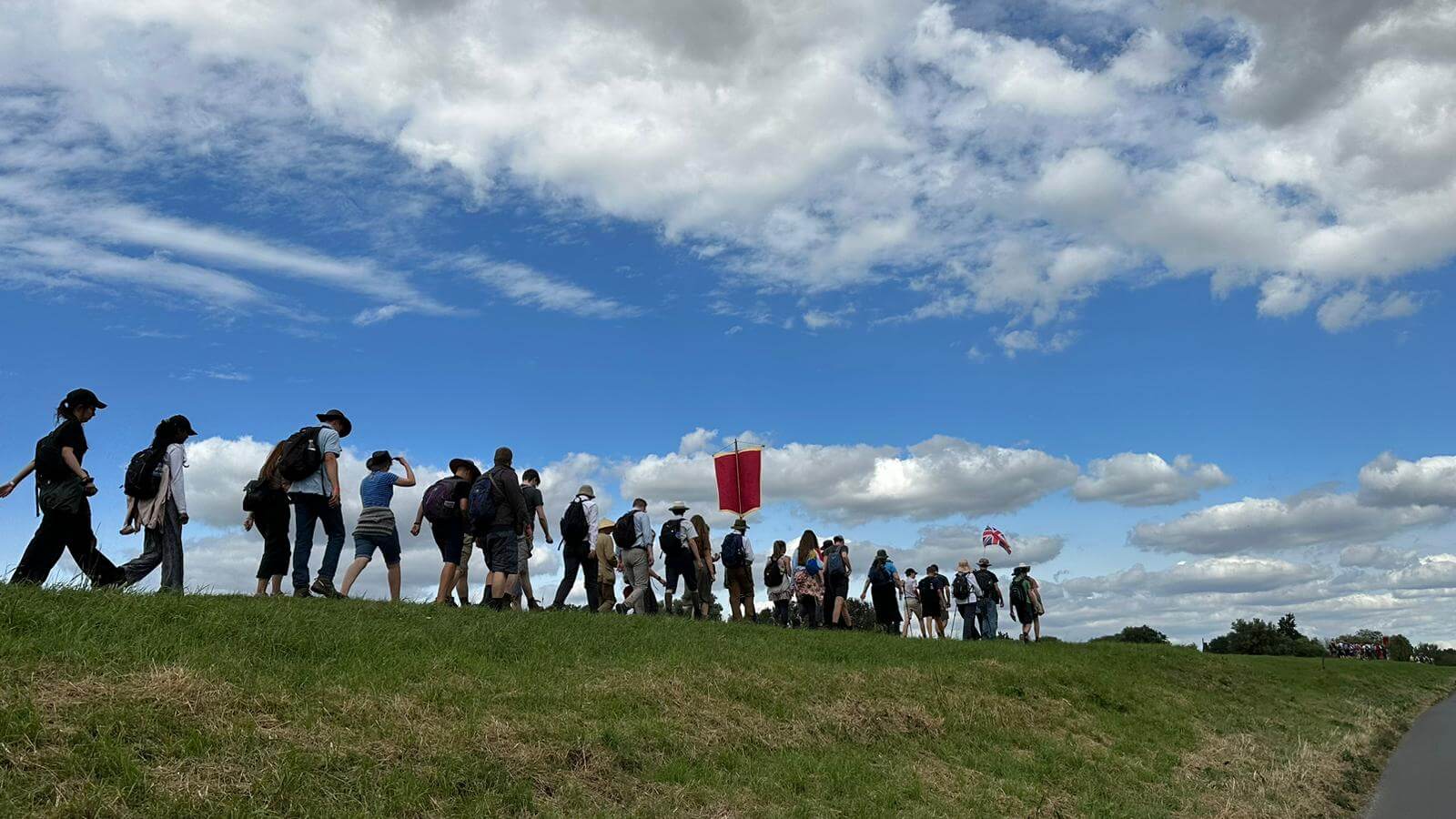All photos by the author.
I recently walked the 76 miles from Cambridge to Walsingham in Norfolk, via Ely, over four days, a walk organised by the Latin Mass Society. I met most of my fellow pilgrims—for that was what they were—after the first leg, and walked with them for the remaining 57 mile: 200 people slogging along paths and roads, or looking after the walkers as drivers or cooks. Some of the young men never seemed to lose their bounce, but I think for everyone at certain points, and for a lot of us for a lot of the time, the element of suffering, of penance, dominated our feelings. After a certain point you can keep walking in a mechanical way, despite the discomfort of your feet or legs, but the discomfort remains.
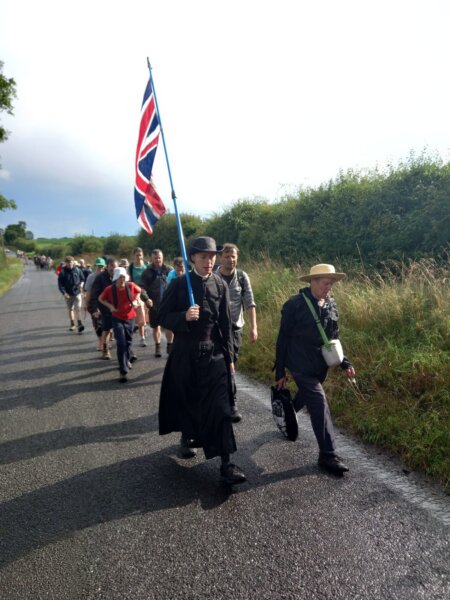
As my aching limbs have slowly recovered—it takes longer every year—I have been reflecting on what it was actually for. It was, of course, an act of devotion to Our Lady, for the conversion of England. In 1061 Our Lady ordered a replica of the Holy House of Nazareth to be built in this small Norfolk village, but this was completely destroyed on the order of King Henry VIII in 1538. To honour its location today may seem quixotic, but it is a reassertion, in the teeth of apparent political and cultural reality, of the idea that this is still a holy place: that we will still honour it as our heavenly mother wished us to, more than 960 years ago.
To make a pilgrimage in post-Christian England is to reassert our country’s sacred geography, our network of holy places, and to honour the largely forgotten saints and heroes of our predecessors. It is not just that by our act of devotion we may please God to pour graces into our hearts and those of our countrymen. It is do something directly to re-Christianise our country. To maintain a sacred geography—to keep in existence the cultural fact, in the England of the 21st century, that Walsingham is a holy place—requires constant reassertion: the paths must be trod continuously. The alternative is described by Shakespeare, referring to the disordered world of A Midsummer Night’s Dream:
…the quaint mazes in the wanton green
For lack of tread are undistinguishable.
If the pilgrim’s path to Walsingham become “undistinguishable,” we have lost something of great importance.
We reassert the holiness of Walsingham with joy and with suffering. The joy predominates. There is the happiness of reuniting with old friends, the fun of singing the old songs, and the spiritual consolations that we may experience. But while the joy predominates, the suffering remains. Suffering is a currency that cannot be devalued, the ultimate guarantee of our seriousness. If we really think that Walsingham is a holy place in a Christian land, we must be prepared to put in some concentrated effort, and accept some suffering.
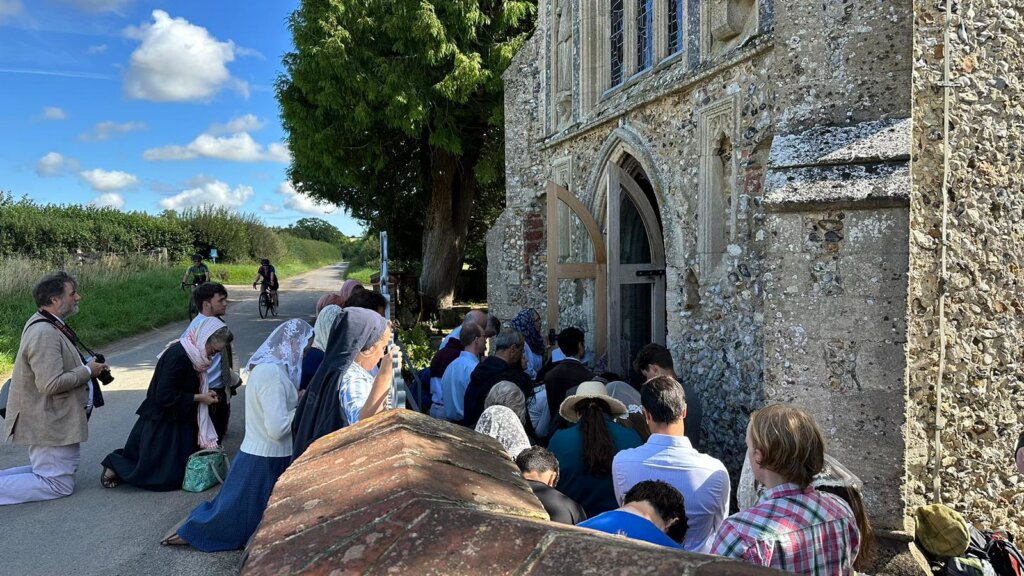
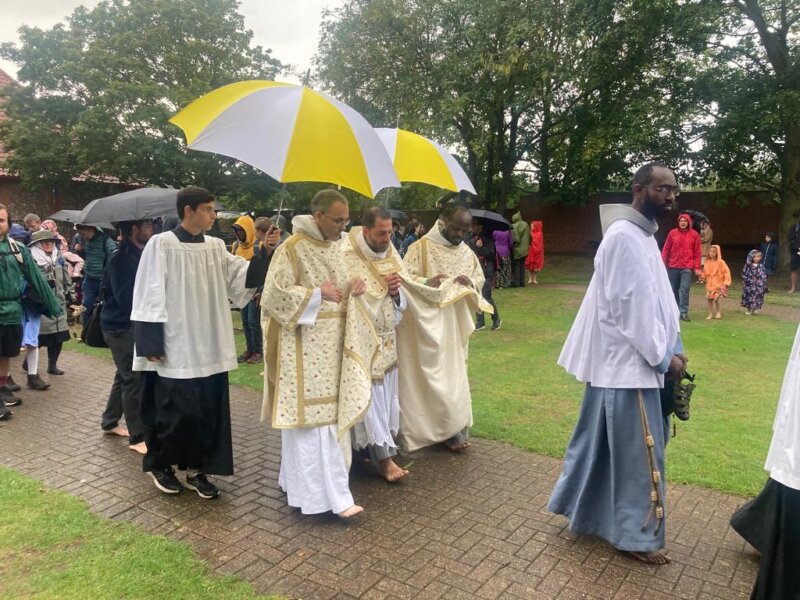
In his book The Mass in Slow Motion, Monsignor Ronald Knox suggested, to the war-time evacuee school-girls who were his original audience, that they could offer up, for him or for any petition, not only their tooth ache but their innocent pleasures: eating an ice-cream, for example. Knox was right: our salvation was effected by Christ’s triumphs and joys, and not only by his sufferings. But suffering tends to come to the fore when we want to offer something to God, and this is for a good reason. You find out who your real friends are when you see who is prepared to undergo inconvenience and embarrassment for your sake. Those we love are those for whom we are prepared to suffer. This is true at the natural level, and the supernatural level as well. The world is not to be won, alas, just by eating ice-cream.
The same is also true of the friends and the songs. To remain a network of friends, you have to stay in touch. For songs to be part of our cultural life, they must be sung. These things require time and effort: they bring us pleasure, but the time and effort are real, and can all too easily be neglected. We can put off seeing our friends, or singing the songs, but after a while they will not be friends any more, and the songs will no longer be features of a shared culture.
We are concerned to convert, as I said, our country, and the conversion of our country involves a reassertion of her Christian culture. Religiosity and national feeling are bound together in a number of popular texts, in a way that seems to worry some people. Search for “Hail Glorious St Patrick” on YouTube and the renditions omit the verse about combatting sin, making it into a purely nationalistic text. Look for “I Vow to Thee, My Country” and the omitted verse is the one written in 1918, applying the Christian principle of self-sacrifice to the real war then taking place. It seems many editors would like us to have only the one or the other, patriotism or Christianity, but in fact true patriotism is informed by religious sentiment, and as the nature of a pilgrimage reminds us, religion does not displace attachment to place. The classic Australian hymn, “Help of Christians,” exalts a conception of “this land” as a “new Eden” that has to be defended, not against foreign enemies, but from internal corruption. Again, in the words of Chesterton’s “O God of Earth and Altar”:
Tie in a living tether, the prince and priest and thrall,
bind all our lives together, smite us and save us all;
in ire and exaltation, aflame with faith and free,
lift up a living nation, a single sword to thee.
Christianity has the right and duty to recall once-Christian nations to their origins as distinct communities united under the Church and ordered towards God. This is what these songs are telling us, and this makes them possible to sing by those who share the Faith even if—like our group of pilgrims—they come from many different nations. In singing these songs, we maintain, even if only in a little corner of society, the sense that what they assert is necessary and right.
The vernacular hymns speak of the project of restoration, sometimes in the form of 19th century High Anglicanism’s appropriation of Catholic heritage. The chant, on the other hand, represents the very thing to be restored: the Parce nobis of penitential impetration, the Litanies of laudatory petition, the Te Deum of thanksgiving. Like the musical settings of our prayers, these songs evoke a kind of relentless, unyielding commitment: a project of heart and mind that takes you up and will not let you go, like the 150 repetitions of the Hail Mary in the Rosary.
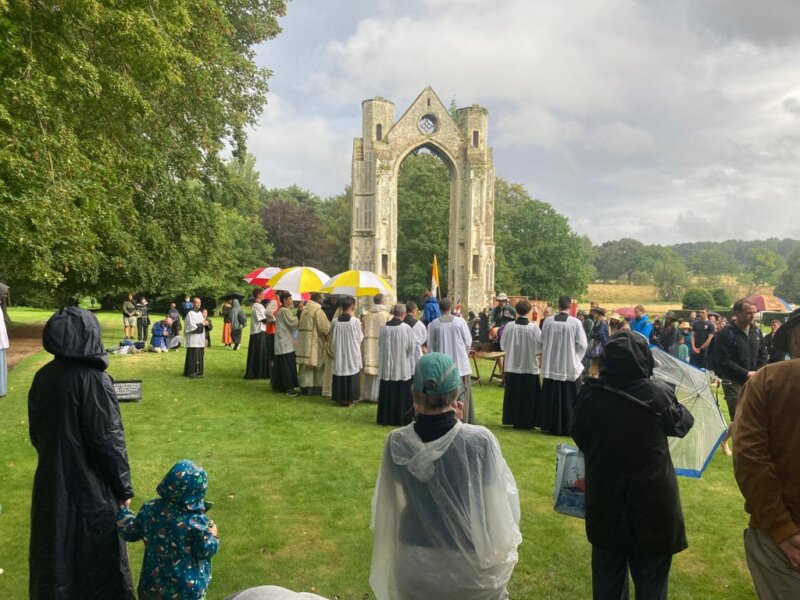
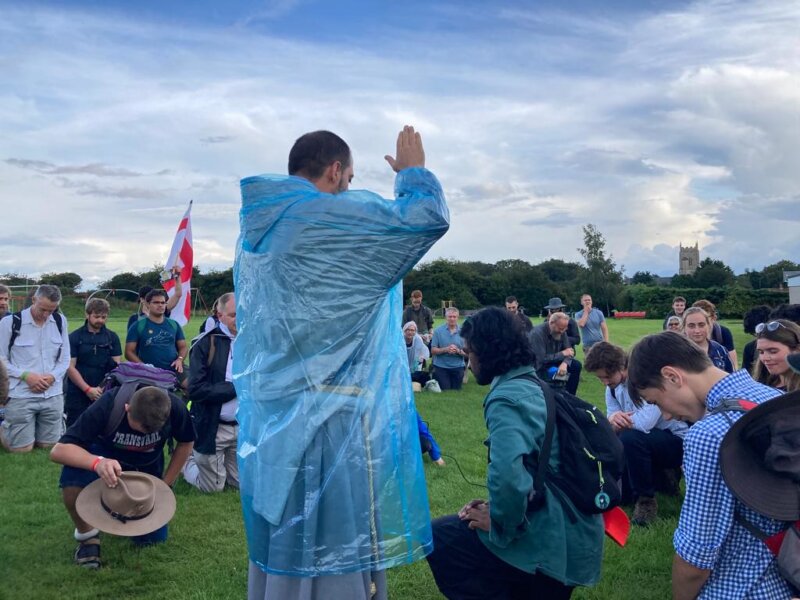
In a walking pilgrimage, the pain is not sought for its own sake, but neither is it incidental to the good to be gained. It is the necessary proof of our seriousness, a seriousness not only about what we would like society to be like, but about our own conversion of life. It is a taking up of our cross.
In the words of the Parce Domine: Hear, O Lord, “nostras preces cum fletibus”: our prayers with our tears.

